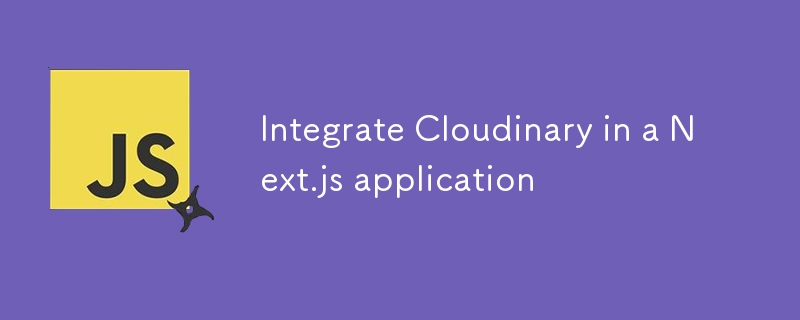

Cloudinary とその価格についてお読みください。
Cloudinary にサインアップし、アカウントをお持ちでない場合は新しいアカウントを作成します。
npm または Yarn を使用して Cloudinary SDK をインストールできます。
npm install cloudinary
Cloudinary 認証情報を保持する構成ファイルを作成できます。これらを環境変数に保持することをお勧めします。
プロジェクト ルートに .env.local ファイルを作成し、Cloudinary 認証情報を追加します。
CLOUDINARY_URL=cloudinary://<api_key>:<api_secret>@<cloud_name> </cloud_name></api_secret></api_key>
// utils/cloudinary.js
import { v2 as cloudinary } from 'cloudinary';
cloudinary.config({
cloud_name: process.env.CLOUDINARY_CLOUD_NAME,
api_key: process.env.CLOUDINARY_API_KEY,
api_secret: process.env.CLOUDINARY_API_SECRET,
});
export const uploadImage = async (file) => {
try {
const result = await cloudinary.uploader.upload(file, {
folder: 'your_folder_name', // optional
});
return result.secure_url; // Return the URL of the uploaded image
} catch (error) {
console.error('Cloudinary upload error:', error);
throw new Error('Upload failed');
}
};
// pages/api/upload.js
import { uploadImage } from '../../utils/cloudinary';
export default async function handler(req, res) {
if (req.method === 'POST') {
const { file } = req.body; // Assume you're sending a file in the body
try {
const url = await uploadImage(file);
res.status(200).json({ url });
} catch (error) {
res.status(500).json({ error: error.message });
}
} else {
res.setHeader('Allow', ['POST']);
res.status(405).end(`Method ${req.method} Not Allowed`);
}
}
// components/ImageUpload.js
import { useState } from 'react';
const ImageUpload = () => {
const [file, setFile] = useState(null);
const [imageUrl, setImageUrl] = useState('');
const handleFileChange = (event) => {
setFile(event.target.files[0]);
};
const handleSubmit = async (event) => {
event.preventDefault();
const formData = new FormData();
formData.append('file', file);
const res = await fetch('/api/upload', {
method: 'POST',
body: formData,
});
const data = await res.json();
if (data.url) {
setImageUrl(data.url);
} else {
console.error('Upload failed:', data.error);
}
};
return (
Next.js アプリケーションを実行し、画像アップロード機能をテストします。
これで、Next.js アプリに Cloudinary が統合されて機能するようになりました。特定の要件がある場合、またはさらにカスタマイズが必要な場合は、お気軽にお問い合わせください。
以上がCloudinary を Next.js アプリケーションに統合するの詳細内容です。詳細については、PHP 中国語 Web サイトの他の関連記事を参照してください。